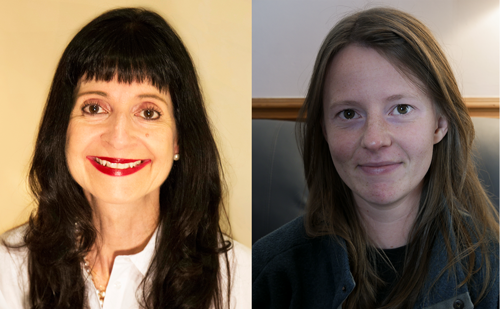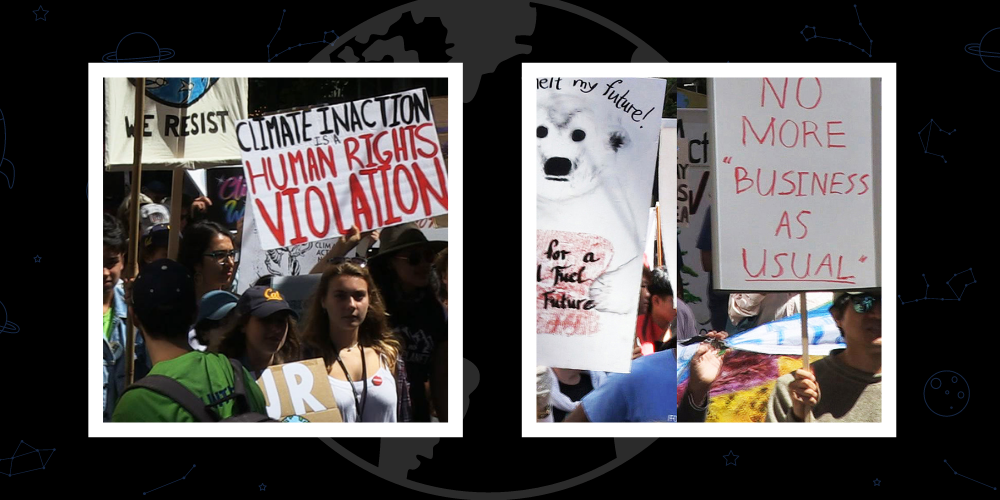החודש, הקהל יכול להקרין בין שני מזחים ברשת Planet Classroom Network. הסרט הזה אוצר על ידי Planet Classroom.
Directed by Rosie Robinson, בין שני מזחים dives into Brighton Beach’s vibrant busking scene. Featuring performances from diverse street artists, it captures the unique connection between performers and audiences, highlighting how social media influences street performances and the community’s engagement with local artwork. גלובל החיפוש לחינוך is pleased to welcome Rosie Robinson.
Rosie, what drew you to the Brighton Beach Busking scene, and what inspired you to create a documentary about it?
In Brighton, where I live, street music performance is part of the fabric of the city’s soundscape all year round. During the strange in-between period at the tail end of the pandemic in 2022, when lockdowns were easing but venues were still restricted, busking in Brighton really blew up. Musicians were itching to play to audiences again after such a long period of isolation. באותו הזמן, there was a spate of videos of busking performances in Brighton that were going viral. I am a musician myself, and at the time was studying an ethnomusicology MA, so I got really interested in how filmmaking could be used as a mode of research for this musical culture.
I was particularly interested in the performances that took place on the seafront, a busy pedestrianized area, unusual within the city for its sparse traffic and relatively few commercial outlets. What I observed was that the music created in this space was really exciting—spontaneous, improvisational, and experimental, pushing the edges of the musician’s technical ability. The style was often quite a bit more playful than what you would hear in a more polished, stage-based performance environment.
Outside of the supportive environment of a live music venue, busking becomes an imperfect, improvisation-based art form, where moments of spontaneity are channeled through dedicated commitment to the craft. Busking necessitates artistic sacrifice—musicians are limited to only using the equipment they can carry and power remotely, and must negotiate unpredictable elements such as noisy surroundings, bad weather, or even hostility from members of the public. I began to notice that the most skilled musicians were able to use these obstacles as a unique set of creative limitations, creating musical moments that could not be replicated in a staged performance or studio recording session. These moments often include evocative flashes of inspired improvisation or instances that feel near-magical, born from a perfect spontaneous interaction between musical expression and the atmosphere of the performance environment.
The film features performances from over ten different buskers, each with a unique sound. How did you select the artists featured, and what was your approach to capturing their diverse musical styles?
Brighton is a small city with a high proportion of creative people in its population. It is also a city with very few enforced regulations when it comes to busking. The result is a supportive environment that encourages its buskers to create sounds that verge more towards the weird and wonderful. I was drawn to musicians who had a spontaneous element to their performance, improvising in the moment and bringing a unique and ephemeral quality to their music.
While my selection process was largely based on my personal preference, there were also more material factors that influenced it. לדוגמא, the willingness of buskers to participate! At the beginning of the project, I would approach musicians to ask for permission before I started filming. לרוע המזל, this approach often backfired. Once aware of the filming, musicians became more self-conscious, which altered their performance. Making plans to film in advance also often led to last-minute cancellations, stalling potential collaborations.
This experience highlighted the differences between busking and concert performances. Unlike concerts, where musicians have a captive audience, buskers perform for a transient crowd. If the musician makes a mistake, or if the passerby doesn’t gel with what they hear, they will normally just move on, while exceptional performances will gather a crowd. This dynamic encourages experimentation and creative risks, as any failure is quickly forgotten, but success can be highly rewarding. My presence with a camera, which could capture and create a permanent and endlessly shareable record of these spontaneous moments, completely disrupted this dynamic.
As I adapted, I realised that the nature of busking—spontaneous and ephemeral—rarely allowed for concrete plans. My approach had to mirror the buskers’ own practice, focusing on the present moment rather than potential future encounters. This shift meant making the most out of spontaneity, much like the buskers themselves.
Social media plays a significant role in the film, influencing the performances and interactions. Can you discuss how you explored the impact of social media on busking and the local community in your documentary?
The idea to make this film was sparked partly by a series of busking clips (many of them from Brighton) that were going viral online. Busking, as an immediate, spontaneous art form, is primed to take full advantage of the combination of social media and the ubiquity of mobile phones. Everyone has a phone in their pocket nowadays—if you do something that is both attention-grabbing and interesting in a public space, chances are someone will record it, and that the recording will be very high quality. I began to think of these recordings as a new kind of musical artefact—the immediacy of mobile phones enabling the capture of moments that would otherwise disappear into the ether as soon as they happened.
This provides a solution to a problem that musicians who busk have traditionally suffered. As quickly as a crowd might gather to take in an epic performance, they disperse as soon as the music stops, leaving no record sales, ticket sales, or lasting community of fans. So I realised that the social media element of busking provides a unique perspective that sets contemporary busking practices apart from any other era.
בסרט, I explore how busking musicians were able to leverage social media to grow their musical brand and build fan communities. I also explore how the act of filming live busking performances can sometimes disrupt the creative flow. One of the people I feature in the film runs a YouTube channel dedicated to the Brighton busking community—he resolves this problem by keeping a low profile (you do not see his face in the film) and by only using a mobile phone to record his videos. By doing this, he is able to capture performances organically, with minimal interference from the presence of a ‘filmmaker.’ He will then chat with the musician afterwards and get their permission to post after the fact.
מעניין, the role of social media in this scene was not just something I observed, I actually used this as part of my filmmaking process. From watching these viral busking videos online, I was aware that there was an appetite among buskers for video production, and I was able to leverage this as a fair exchange for being in my film. Videos that I recorded, as well as becoming the building blocks for my film, were also used by the musicians as performance videos that were posted on their own social media channels. This approach even resulted in the creation of a music video for one of the musicians, which actually features at the end of the film as well.
Your film beautifully captures the intimate connections between performers and beach-goers. How did you approach filming these interactions to convey the unique atmosphere and community spirit of Brighton Beach?
I thought a lot about what gear I would need and how to approach capturing candid interactions with members of the public. מצד אחד, I wanted the film to look and sound good. מצד השני, I had a very limited budget and resources, and I knew that having too much gear would be distracting. אז, I settled on a handheld DSLR and a separate audio recording device that could be quickly set up and left to record while I moved around capturing the imagery.
I researched techniques that street photographers use to avoid intruding on the flow of everyday life. I was inspired by street photographers like Vivian Maier, who ‘shot from the hip’ with a Rolleiflex camera, which has its viewfinder on the top of the body so you have to look down into it to line up the shot rather than through it. This technique enabled her to move through the world without having to hold a camera up to her face. This technique is more covert than I wanted to be, so I also took inspiration from visual anthropologists like Sarah Pink, who prioritizes making eye contact with the people she films, communicating a sense of collaboration and good intentions through body language. Using this approach meant I was able to be an active participant in the interaction while simultaneously recording.
Due to the spontaneous nature of these performances, I quickly realised that planning shots in advance was impractical. Filming handheld rather than using a tripod allowed me to make split-second decisions about camera placement, moving with the music as felt appropriate. Inspired by Les Blank’s idea of music film as a piece of music itself, I filmed in a way that felt like a reciprocal dance between the camera and the performers, almost as if I was another improvising player in the musical performance.
By using all these techniques, I aimed to capture the ambience, reactions of passersby, and the overall environment that contribute to these street music performances on the Brighton seafront. By developing a collaborative approach to recording street performances with musicians like Josh and Elia, we created material that could be shared across online platforms, broadening their audience and providing new opportunities. This collaborative and very much DIY method that arose from all of these influences helped convey the spontaneous, intimate connections that, to me, define the Brighton Beach busking scene.
תודה לך, Rosie.
C.M. Rubin with Rosie Robinson
אל תחמיצו בין שני מזחים זורם כעת ברשת Planet Classroom. הסרט הזה אוצר על ידי Planet Classroom.







תגובות אחרונות